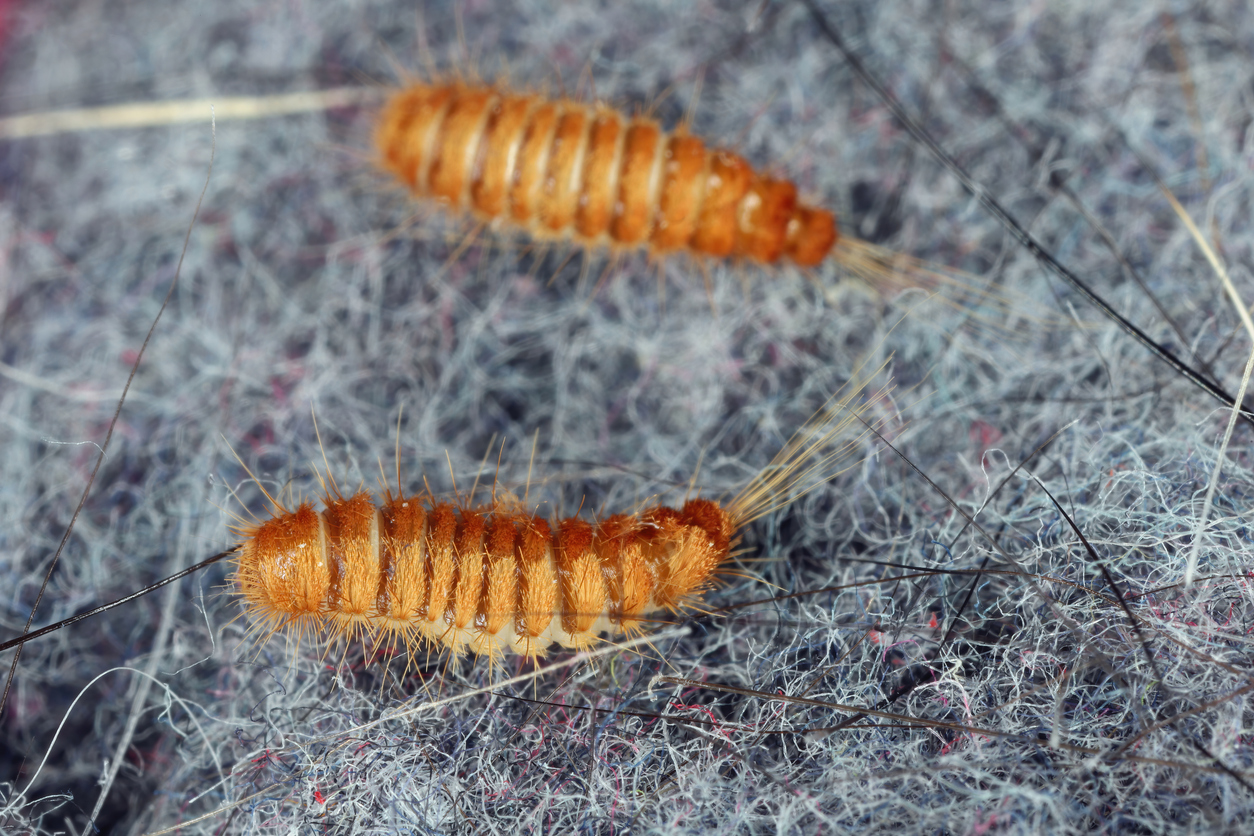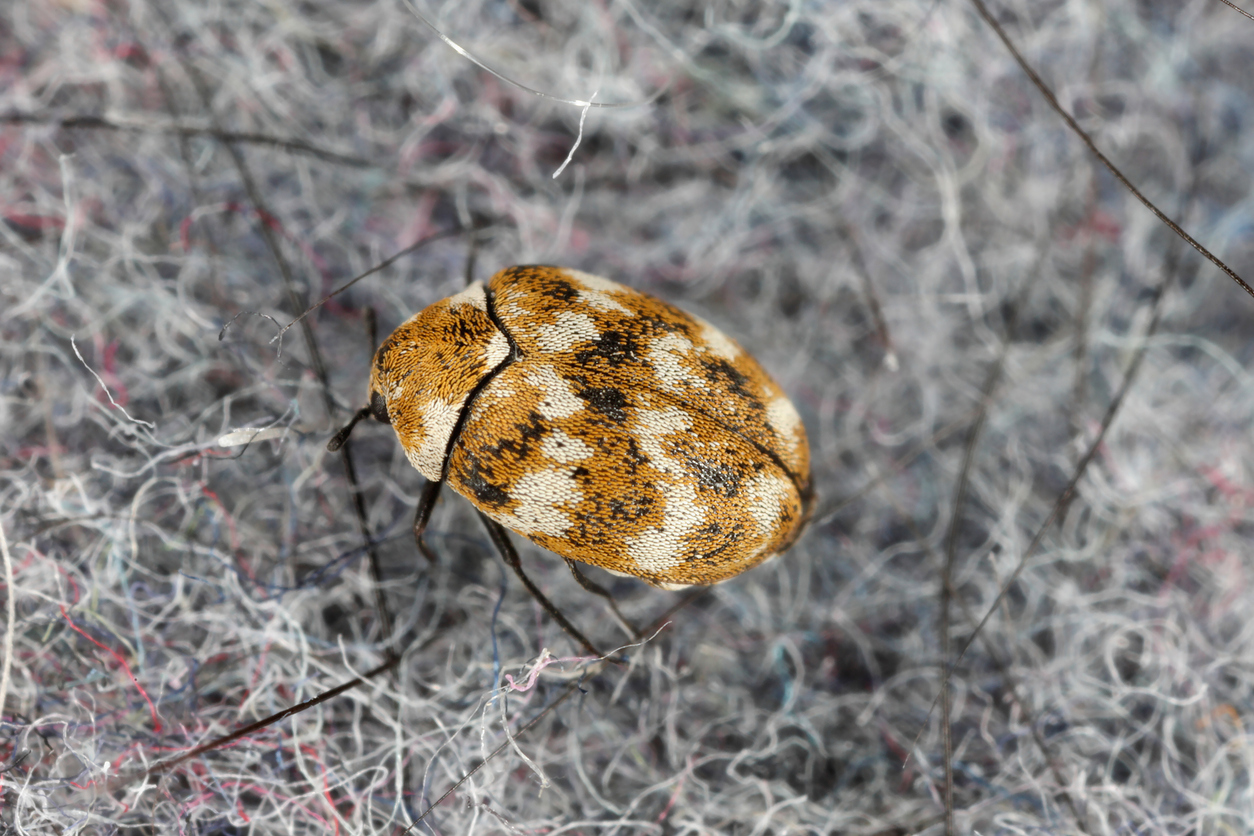This Bug’s Got Expensive Taste: Carpet Beetles and Fabric Infestations
Some insects enjoy living in lush grass, others enjoy lush fabrics — such as the carpet beetle.
These fabric fiends can cause some serious, unwanted redecorating in your home. Discover more about the carpet beetle’s habits and how to let them know they’ve overstayed their welcome.
What Does a Carpet Beetle Look Like?
Carpet beetles are oval-shaped insects, with tiny bodies that are only about 2 to 4 mm long as adults. Their coloring resembles a zig-zag pattern, with hints of black, white, yellow, brown, and even orange.
Where Do Carpet Beetles Live?
Although their name would suggest otherwise, adult carpet beetles often live outdoors in nests or plants, as it better suits their diet. They can also be found living indoors, though it’s more likely to be found in walls, chimneys, or near light sources like windows and doors. However, carpet beetles prefer to lay their eggs in upholstery, carpet, and rugs. The carpet beetle larvae thrive in these types of fabric-based environments, as their food sources are abundant.
When Do Carpet Beetles Come Out?
Developmental time for the carpet beetle larvae happens quicker at warm, humid temperatures. As a result, carpet beetle reproduction booms in spring and early summer. Similarly, carpet beetles are more prevalent in the southern United States, where these warm and humid temperatures occur more frequently.
What Do Carpet Beetles Eat?
Adult carpet beetles mainly feed on flower pollen and seeds, while the carpet beetle larvae feast on natural and synthetic fibers. These fibers include wool, silk, cotton, felt, animal hair, fur, and leather.

Are Carpet Beetles Dangerous?
Outside of the damage that carpet beetle larvae cause to fabrics, carpet beetles are not dangerous to humans. If they are attached to clothing fibers, the most that might occur is slight skin irritation from the carpet beetle’s bristly hairs.
How Do You Get Rid of Carpet Beetles?
Because carpet beetles can populate very rapidly, taking fast action to kick them out of the house is necessary. If you’re looking for natural solutions to regain control of your carpets, vacuuming, steam cleaning, or treating the affected areas with a vinegar solution are all effective means.
Chemical solutions can also be used to treat carpet beetle infestations, although not recommended for environments with pets or children. These chemical solutions include sprinkling boric acid on affected carpet or using indoor insecticides.
Having uninvited houseguests can make anyone feel uncomfortable in their own home. Have Hughes handle these insect-sized ones with a free pest inspection today.






 YouTube
YouTube Facebook
Facebook Twitter
Twitter